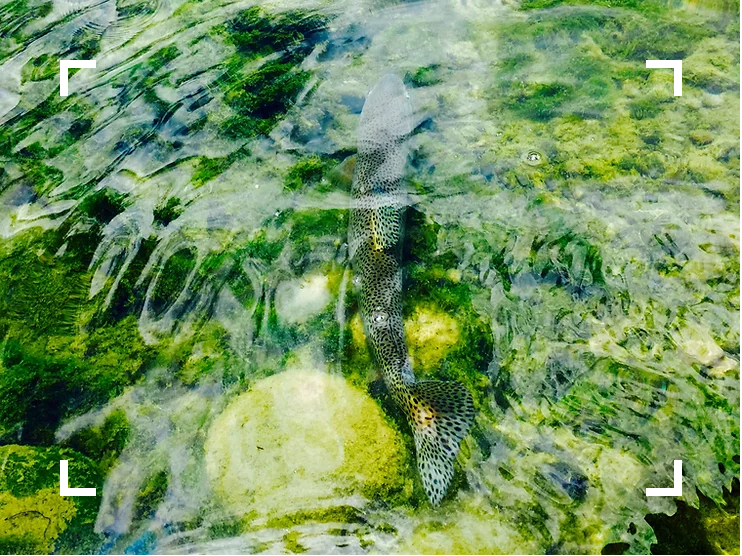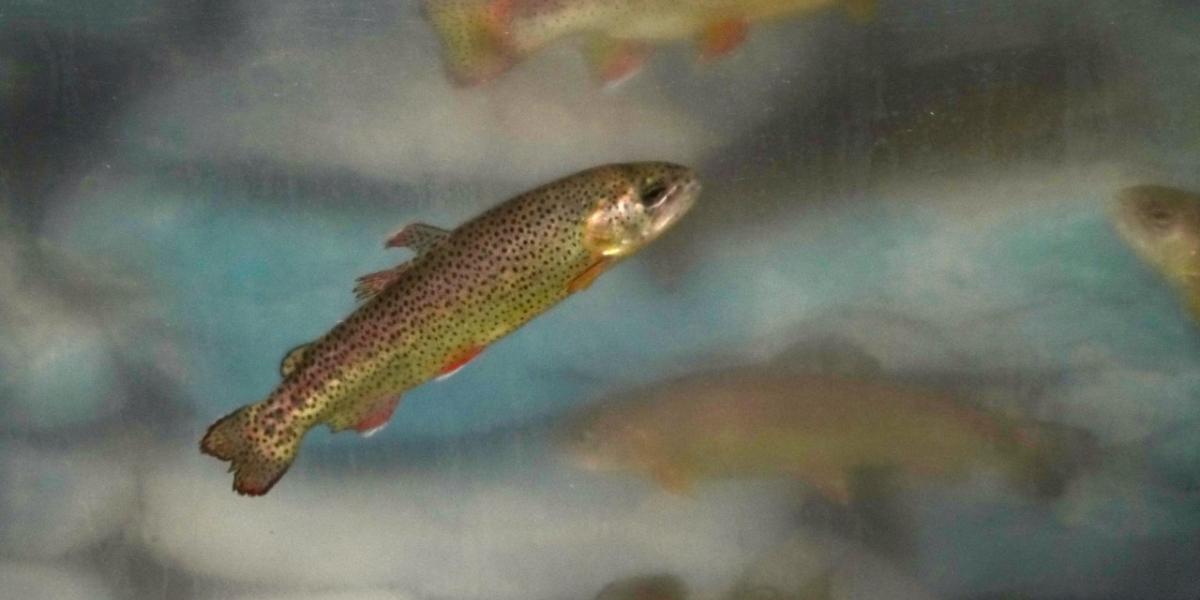Conservation Concept: Shifting Baseline Syndrome
Grandpa might have been right after all: The fishing just ain't what it used to be...

Shifting baselines are intergenerational changes in the way we perceive the state of the world.
Revisited June 2025
It's no coincidence that your grandparents remember a different world than the one we are living in today... You've probably heard folks from the Silent and Baby Boomer generations say something like, "The fishing ain't what it used to be." And they aren't wrong. In the U.S., we've been slow to acknowledge and recognize the impacts humans have had on things like water or fishery quality. We've increased the amount of pollution and greenhouse gases in the world, and scoured critical habitat for human expansion. If environmental degradation is at an all time high, then why aren't people more aware of the profound impacts we have had and continue to have on the natural world?
Imagine that your family harvests fish from a lake where fish populations are declining from over-harvest. This lake originally became popular due to its once-robust fish population, and many families harvest fish for their livelihood. We can consider the baseline as the approximate number of fish living in the lake at any time. Due to extensive over-harvesting, the initial fish population drops over your grandfathers lifetime, and he notes how many fish he used to catch. When the business is finally inherited by the son, your father, the population has already dwindled but your father has a different perception of baseline conditions and how many fish are 'normally' harvested. By the time you take over, you've heard the stories from your family, but your 'normal' harvest is seemingly consistent, leading to another difference in perception of baseline conditions. If you were the first one in the family to record the average number of fish you were harvesting, losses might not even seem as dramatic unless you had your grandfathers numbers for comparison. These are the conditions you've always known and seen... and accepted. Even though grandpa might have told stories about how it used to be, you’ve never seen that yourself and can’t truly appreciate what that was like.
This problem, coined as the Shifting Baseline Syndrome, has been documented as a psychological and sociological phenomenon where people's assumption about how natural conditions are inherited are assumed to be how things always were. Turns out, our society is pretty bad at tracking trends over time, especially if they aren't looking closely. Plus, scientists are still putting pieces together to understand the full dynamics of the natural world, and findings can easily be complicated by complex social-ecological interactions, or temporal and spatial intricacies. Basically, we don't always have a clear enough picture to get a true baseline. Or, the baseline numbers look different throughout time, based on who’s monitoring and when they started.
Conservation Implications
A shifting baseline can be especially problematic when creating conservation and restoration strategies, especially when we are trying to answer difficult questions, like:
- To which baseline are we attempting to restore a system? One that existed 10 years ago? 20? 50? Or even 100?
- What is a reasonable baseline?
- How much habitat was lost from that baseline?
- What was the population of species X at this baseline?
- To what level are we trying to restore the conditions?
For well-studied species, there might be a decent record to review, but many species are still poorly understood. For example, the Bonefish and Tarpon Trust only recently learned some basic life history details for several well-loved flats gamefish. Another example; by the time catch and release practices were set up for Washington sea-run coastal cutthroat trout, an estimated 70% of some important coastal habitats were already lost (Stoll, 2017). But how do we know it was only 70%? That number is dependent on someone's baseline assumption...
Boiled down...If we want to restore an ecosystem to baseline conditions, how do we know that the baseline represents a point in time when the resource was thriving?
Going back to the lake example, the grandson might have a baseline expectation that’s radically depleted compared to that of their grandfather. Successful restoration based on the grandson's benchmark would be minimal in comparison to the grandfather's benchmark. If the grandson was asked whether or not the lake was depleted, he'd be more likely to say no, while his father and grandfather would almost assuredly note that the lake has been depleted. Investigators have recently compiled research suggesting that this phenomenon isn’t just the older generations lamenting about the way things used to be, but more likely attributable to “society’s creeping amnesia” about environmental degradation.
Unfortunately, species protections laws like the U.S. Endangered Species Act try to quantify how much critical habitat is required to adequately protect a species from extinction. This process involves establishing baselines and checkpoints to monitor success. Too often, ”grandson” numbers get used and as a result, species bounce on and off the list... again and again, unable to re-establish without human supplementation. Policy makers subject to shifting baseline syndrome may under-represent the amount of habitat or population requirements needed to stabilize threatened and endangered species.
More nefariously, intentionally shifting windows of what baseline conditions actually entail can lead to a species avoiding a listing altogether, despite any overwhelming witness claims of degradation from elder generations (greater sage-grouse anyone?). Sometimes economic incentives influence whether or not a species is listed or not. A listing of any salmon in the Snake River drainage could have economic impacts related to a loss of the dam/lock system, which would be removed to facilitate salmon migration if they are ever listed.
We think the world of conservation should be rooted in ecology and sound science; but humanities role in monitoring and maintaining the natural world is bound by our own psychology. If we are to take over the responsibility of overseeing and mitigating the damage we cause to other species, we need to recognize the psychological shortcomings that impair our ability to live up to that responsibility.

Want to hear more examples? This presentation from Callum Roberts is worth the watch.
Sources:
- Karrow, T. 2015. Ghost Stories: Bahamas' Bonefish and Shifting Baseline Syndrome. Fly Life Magazine. https://flylifemagazine.com/ghost-stories-bahamas-bonefish-and-shifting-baseline-syndrome/
- Stoll, R. 2017. Sea Run Cutthroat Trout; California to Alaska: A saltwater Fly Anger's Guide to Their Biology, Prey, Angling Strategies, and Conservation. West Sound Angler.
- Soga, M & Gatson, K. 2018. Shifting baseline syndrome: causes, consequences, and implications. Frontier in Ecology and the Environment. 16-4. https://esajournals.onlinelibrary.wiley.com/doi/10.1002/fee.1794
- Engelke, P. & McNeil, J.R. 2016. Are we at the beginning of a new geological era? https://www.georgetownenvironmentalhistory.org/home/peter-engelke-and-john-mcneill-in-the-washington-post-for-earth-day-are-we-at-the-beginning-of-a-new-geological-era
- Geranios, N. 2019. Study Examines Pros And Cons Of Removing Snake River Dams. Associated Press. https://patch.com/washington/across-wa/study-examines-pros-cons-removing-snake-river-dams



